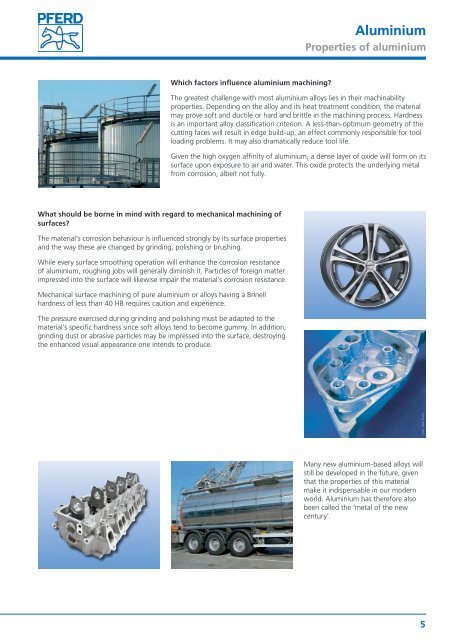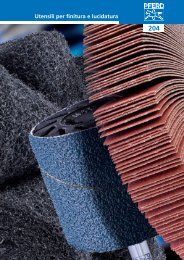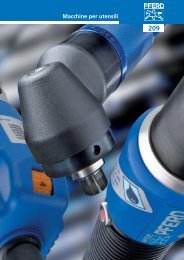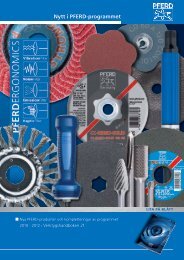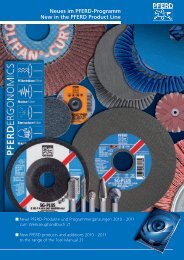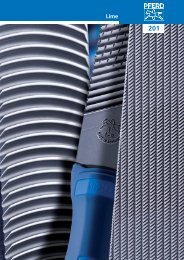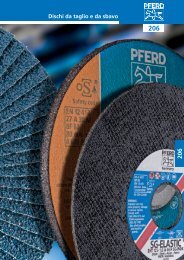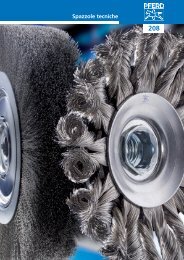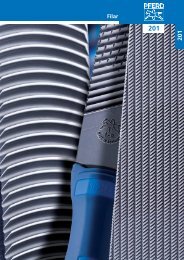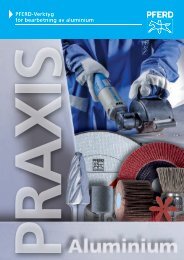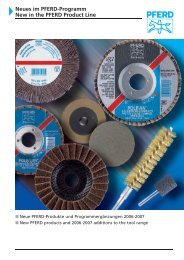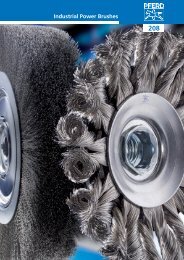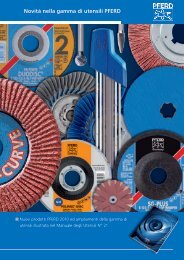Aluminium PRAXIS - PFERD
Aluminium PRAXIS - PFERD
Aluminium PRAXIS - PFERD
You also want an ePaper? Increase the reach of your titles
YUMPU automatically turns print PDFs into web optimized ePapers that Google loves.
Which factors influence aluminium machining?<br />
What should be borne in mind with regard to mechanical machining of<br />
surfaces?<br />
The material’s corrosion behaviour is influenced strongly by its surface properties<br />
and the way these are changed by grinding, polishing or brushing.<br />
While every surface smoothing operation will enhance the corrosion resistance<br />
of aluminium, roughing jobs will generally diminish it. Particles of foreign matter<br />
impressed into the surface will likewise impair the material’s corrosion resistance.<br />
Mechanical surface machining of pure aluminium or alloys having a Brinell<br />
hardness of less than 40 HB requires caution and experience.<br />
The pressure exercised during grinding and polishing must be adapted to the<br />
material’s specific hardness since soft alloys tend to become gummy. In addition,<br />
grinding dust or abrasive particles may be impressed into the surface, destroying<br />
the enhanced visual appearance one intends to produce.<br />
<strong>Aluminium</strong><br />
Properties of aluminium<br />
The greatest challenge with most aluminium alloys lies in their machinability<br />
properties. Depending on the alloy and its heat treatment condition, the material<br />
may prove soft and ductile or hard and brittle in the machining process. Hardness<br />
is an important alloy classification criterion. A less-than-optimum geometry of the<br />
cutting faces will result in edge build-up, an effect commonly responsible for tool<br />
loading problems. It may also dramatically reduce tool life.<br />
Given the high oxygen affinity of aluminium, a dense layer of oxide will form on its<br />
surface upon exposure to air and water. This oxide protects the underlying metal<br />
from corrosion, albeit not fully.<br />
Many new aluminium-based alloys will<br />
still be developed in the future, given<br />
that the properties of this material<br />
make it indispensable in our modern<br />
world. <strong>Aluminium</strong> has therefore also<br />
been called the ‘metal of the new<br />
century’.<br />
Foto: Otto Fuchs<br />
5


